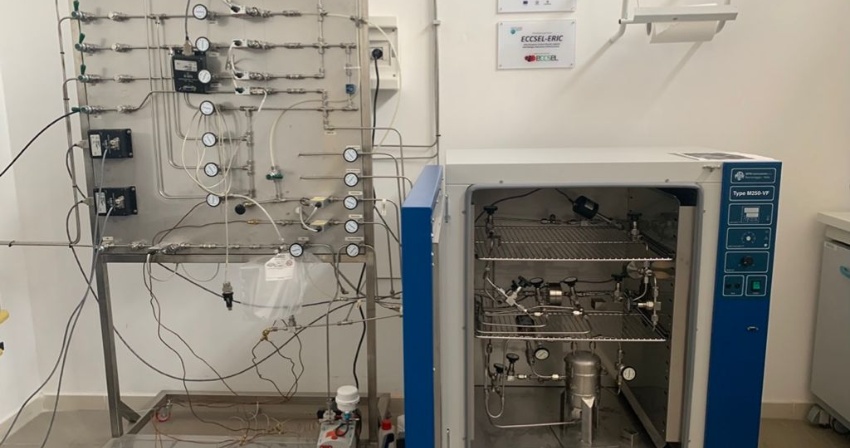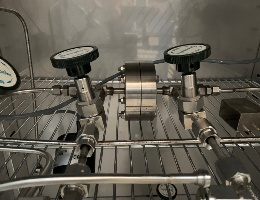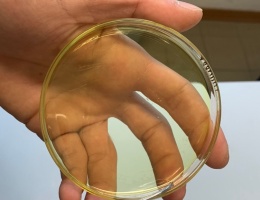CO2 separation with membranes
Research line developed within the CEEP (Centro Eccellenza Energia Pulita) project on the topic of low-carbon energy production.
Date:
03 September 2021
The employment of membranes represents one of the most promising solutions for CO2 separation nowdays, especially in the natural gas and biogas purification (separation of CO2 from methane) and power generation sectors. Particularly interesting are pre-combustion (CO2/H2 separation from syngas) and oxy-combustion (O2/N2 separation for oxygen purification) applications, while the post-combustion applications (separation CO2/N2 at low pressure) are considered more problematic as they operate at low pressure. Sotacarbo's research activity on membranes has led to the construction, in the Research Centre's laboratories, of a bench-top installation, known as a permeometer, for the development and experimental characterisation of the membranes themselves.
Membranes are housed in a cell. The fraction of the current that manages to pass through the cell is called the permeate, while that which does not pass through the membrane is called the retentate. The desired product can be either in the permeate or in the retentate, depending on the operating conditions. Depending on the desired result, the process configuration and operating conditions of the system must be carefully defined.
The aim of the activity is to develop and characterise different types of polymeric membranes for separating CO2 from hydrogen (pre-combustion applications) and for biogas purification. In pre-combustion capture (applied in gasification plants integrated in combined-cycle systems, IGCC), CO2 is separated from syngas before combustion takes place: after gasification and catalytic conversion of carbon monoxide to carbon dioxide (so-called water-gas shift conversion), the syngas consists mainly of CO2 and H2.
Use of selective membranes to separate CO2 from hydrogen prior to the use of syngas as fuel in the combined cycle plant is promising due to specific properties. The separation of gases via membranes obviously presents ‘drawbacks’ related to the difficulty of obtaining a high-purity product, the need for large working surfaces, and not least the need to achieve a compromise between selectivity and permeability. An optimal combination can be achieved in mixed matrix membranes (MMM), which combine polymeric materials with inorganic compounds with superior transport properties.
The research activity, developed together with the Department of Civil, Chemical, Environmental and Materials Engineering of the University of Bologna, allowed to verify the feasibility of so-called ‘mixed matrix membranes’ (MMM) based on poly (2,6-dimethyl-1,4-phenylene oxide (PPO) to separate H2 and CO2 in application to the purification of syngas obtained from coal gasification. To simultaneously perform H2 purification and carbon dioxide capture, the research aims to improve the selective behaviour of H2 by incorporating different types of fillers such as zeolites and metal organic frameworks (MOFs). The characterisation of these membranes with specific selectivity and diffusivity was studied using the permeometer available at the Sotacarbo laboratories.
Last update
06/11/2024, 12:03



